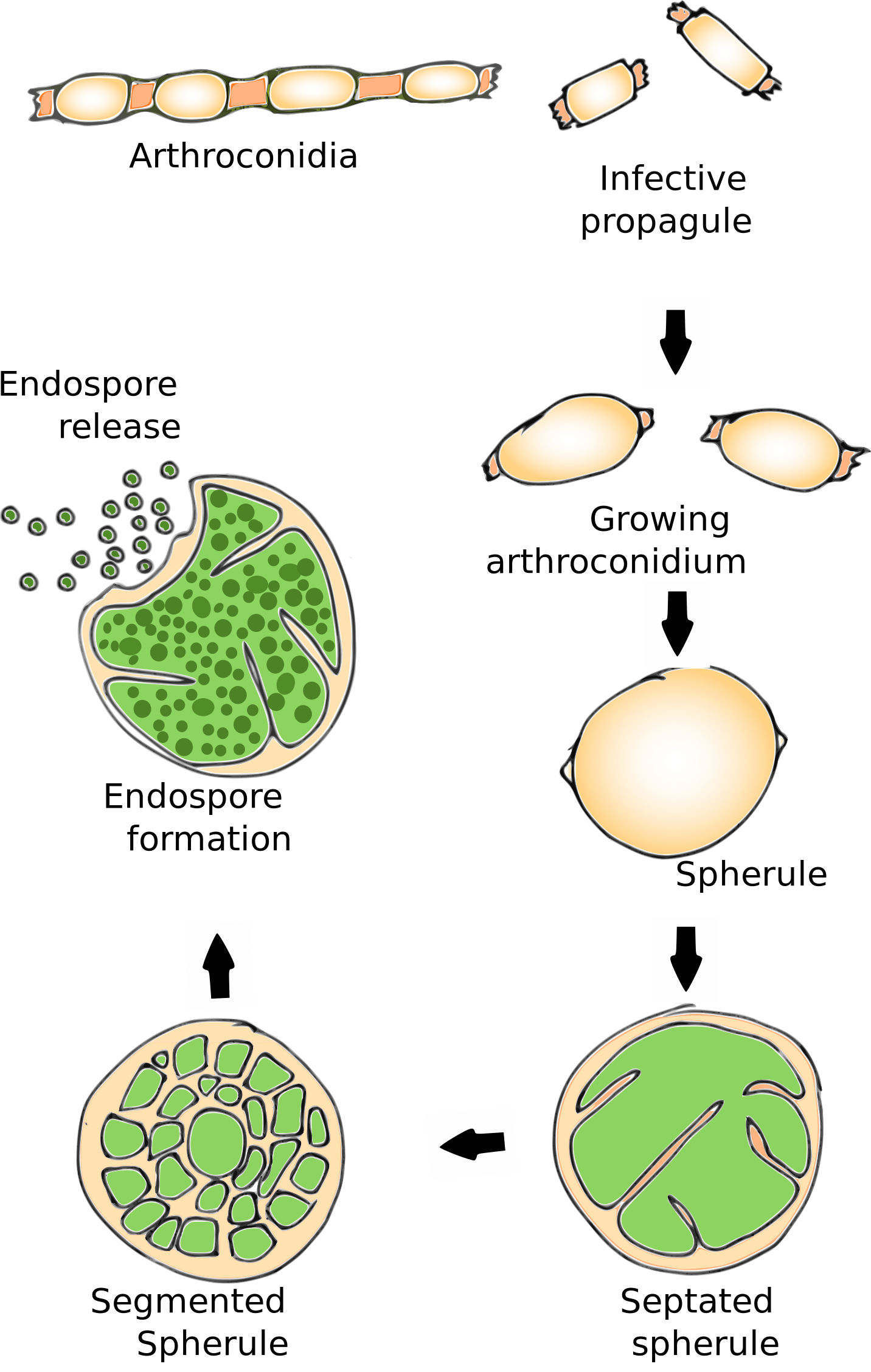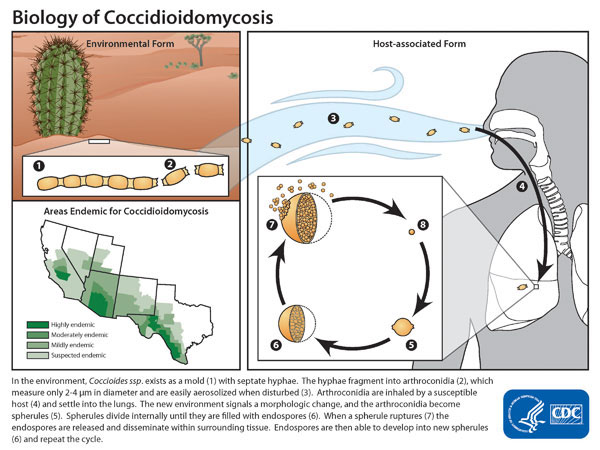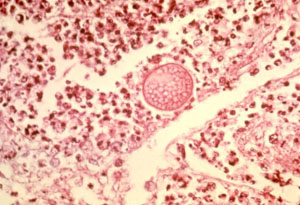Coccidioidomycosis pathophysiology
|
Coccidioidomycosis Microchapters |
|
Diagnosis |
|---|
|
Treatment |
|
Case Studies |
|
Coccidioidomycosis pathophysiology On the Web |
|
American Roentgen Ray Society Images of Coccidioidomycosis pathophysiology |
|
Risk calculators and risk factors for Coccidioidomycosis pathophysiology |
Editor-In-Chief: C. Michael Gibson, M.S., M.D. [1]; Associate Editor(s)-in-Chief: ; Vidit Bhargava, M.B.B.S [2]
Pathophysiology
C. immitis resides in the soil in certain parts of the southwestern United States, northern Mexico, and parts of Central and South America [3]. It is dormant during long dry spells, then develops as a mold with long filaments that break off into airborne spores when the rains come. The spores, known as arthroconidia, are swept into the air by disruption of the soil, such as during construction or farming. Infection is caused by inhalation of the particles. The disease is not transmitted from person to person. C. immitis is a dimorphic saprophytic organism that grows as a mycelium in the soil and produces a spherule form in the host organism.
Once inside a susceptible host the anthroconidia enlarge, become rounded and develop internal septations to form what are known as the spherules. These contain uni-nuclear cells called as endospores which may propagate the infection further as they have the capability to develop into spherules. This conversion of anthroconidia into spherules initiates an inflammatory reaction and leads to a chemotaxic response which attracts neutrophils and eosinophils to the site of inflammation. Cell mediated immunity keeps the infection in check and keeps them limited to the organ of origin by forming granulomas. Delayed type hypersensitivity to coccidioidal antigens is common after acute infection has resolved. Dissemination usually occurs via the lymphatics and is more common in immune suppressed in whom the primary infection is not contained.
-
Life cycle of coccidiodes
-
Life cycle and epidemiology
-
Histopathological changes in coccidioidomycosis
The infection starts in the lungs. There are three forms of coccidioidomycosis: acute, chronic, or disseminated.
- Acute pulmonary coccidioidomycosis. It almost always mild, with few or no symptoms, and goes away without treatment. The incubation period -- the time between breathing in the spores and becoming sick -- is 7 to 21 days.
- Chronic pulmonary coccidioidomycosis can develop 20 or more years after initial infection. Infections (lung abscesses) can form and rupture, releasing pus (empyema) between the lungs and ribs (pleural space).
- Disseminated coccidioidomycosis is a widespread form of the disease. Infection spreads to other parts of the body, including the skin, brain, bones, and heart. Meningitis occurs in up to half of all people with disseminated coccidioidomycosis.
Microscopic Pathology
{{#ev:youtube|RtpvzCfFwfg}}


